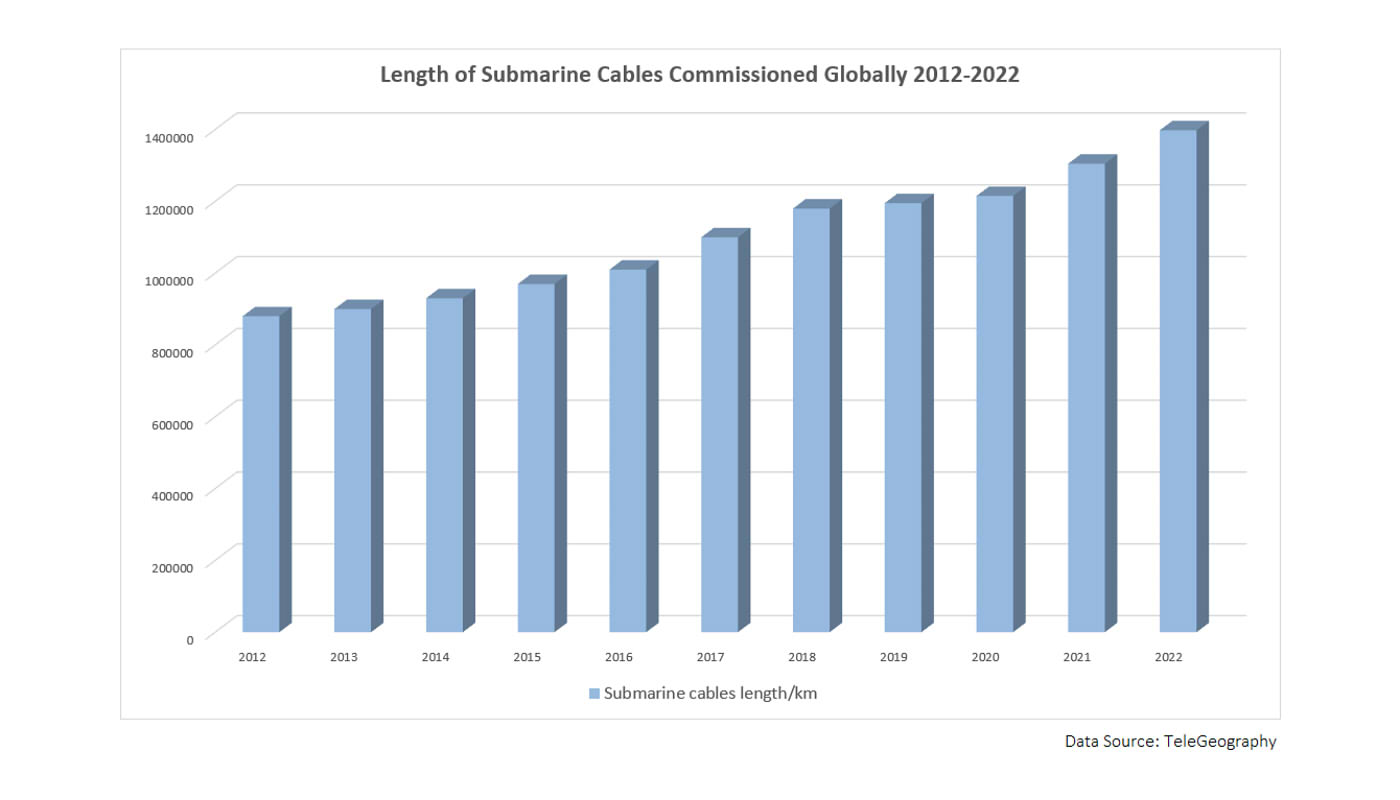Amid an ever-evolving digital landscape, the global submarine cable industry is undergoing a profound transformation driven by the inevitable generational change. Aging submarine internet cables will be retired and a boom in the construction of state-of-the-art submarine cable systems is underway.
According to data from TeleGeography, end of 2022, the number of submarine cables in production worldwide reached 469, with a total length of more than 1.39 million kilometers. And according to the announced plan, from 2023 until 2026, others will be put into production 80 submarine cables, with a total length of approx. 390,000 kilometres.
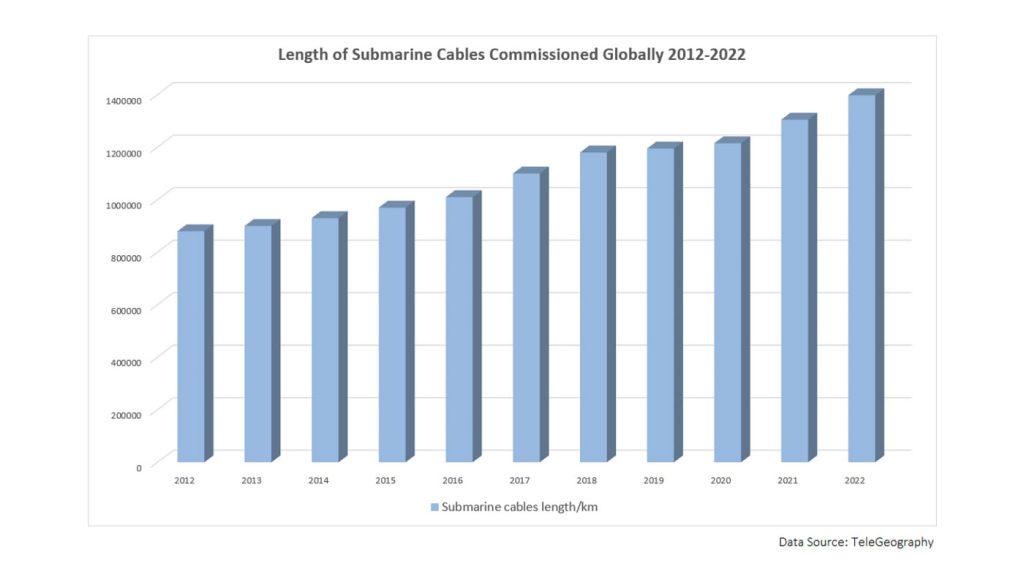
This wave of innovation and expansion is sure to revolutionize global connectivity., facilitating seamless data sharing and ushering in a new era of enhanced human and economic exchange across continents and regions.
Table of Contents
- Generational Shift Drives Submarine Cable Construction Boom
- Information Traffic Drives the Global Expansion of Submarine Cables
- Strengthening Intra-Regional Connectivity Drives the Growth of Submarine Cables
- Interregional Capacity Expansion Drives Global Connectivity
- Europe-North America: Improving Transatlantic Communication
- Asia-North America: Strengthening Transpacific Linkages
- Latin America-North America: Uniting the Americas
- Asia-Europa: Strengthening Eurasian Ties
- Asia-Oceania: Improving Intercontinental Links
- Oceania-North America: Driving Transpacific Data Transfer
- The Future of Submarine Cables: Paving the Way to a Connected World
Generational Shift Drives Submarine Cable Construction Boom
The design lifetime of submarine fiber optic cables is typically 25 years, which creates an incentive for their replacement, both old and new.
Replacement of Obsolete Cables
All over the world they have built 464 fiber optic submarine cables, Y 82 cables built before 1998 have reached their design life. Over time, submarine cables built in 1999-2003 Y 2004-2008 amount to 79 Y 69, respectively. It is projected that a total of 148 submarine cables will be withdrawn in the next 10 years, creating a crucial time window for the installation of new submarine cables.
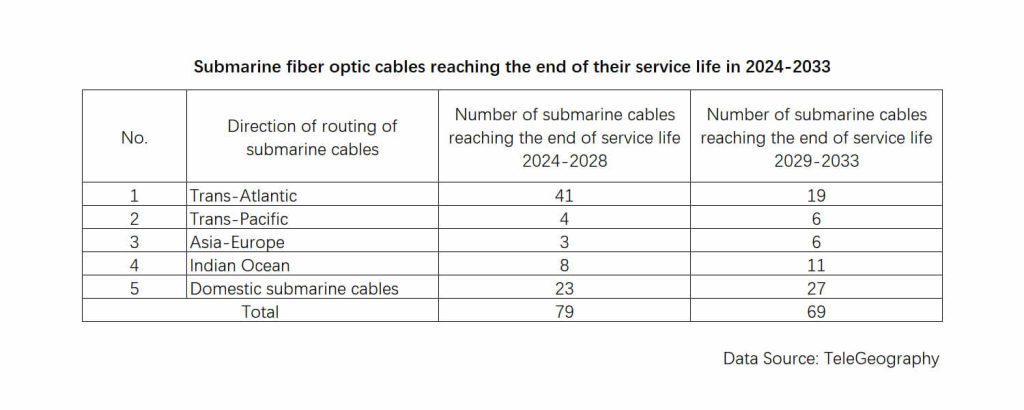
Expansion on the Horizon
Predictions from the Chinese Academy of Information and Communication Technology indicate the construction of 153 new submarine cable systems, with a total length of approx. 770,000 kilometres, from 2023 until 2028. This ambitious expansion aims to meet the growing demand for international bandwidth and facilitate the provision of global data centers.
Information Traffic Drives the Global Expansion of Submarine Cables
The increasing flow of information traffic on the Internet and the strategic distribution of data centers are driving transformative changes in the global landscape of submarine cables.. With increasing demand for interconnectivity, submarine cable networks within each region are undergoing continuous expansion.
It is important to note that traditional high-capacity routes, as Europe-North America, Asia-North America, Latin America-North America and Asia-Europe, are experiencing reinforced construction efforts. At the same time, the introduction of new routes underwater cables is gradually refining the architecture of oceanic networks, raising global connectivity to unprecedented levels.
Submarine cable capacity in key directions globally is on the rise, reflecting the growing need to upgrade and build new systems. According to data from TeleGeography, global use of international bandwidth reached an impressive figure of 3,811 Tbps I don't 2022, with a remarkable compound annual growth rate (CAGR) of 44% from 2015 until 2022.
International Bandwidth Usage
In terms of international bandwidth usage, best performing addresses, in descending order, son intra-Europa, Europe-North America, intra-Asia, Asia-North America and Latin America-North America. Besides, the highest annual growth rates are observed in the following directions, listed in descending order: Asia-Oceania (57%), intra-Africa (56%), intra-Asia (53%), Africa-Middle East (51%), Asia-Europa (50%) and Africa-Europe (50%). These figures reflect the rapid expansion and evolution of the networks of submarine fiber optic cables for Internet in regions with exponential growth in Internet usage and data demand.
With the increase in the use of international bandwidth and the exponential growth of data traffic, The need for robust, high-speed submarine cable systems has never been more critical.. As the digital age continues to shape our global landscape, the development and improvement of submarine cables will play a fundamental role in fostering fluid and efficient communication between continents and regions.
Strengthening Intra-Regional Connectivity Drives the Growth of Submarine Cables
The rise of regional economic integration has fueled the demand for internal connectivity within each region.. Of 2018 a 2022, delivered an impressive total of 106 submarine cables around the world, with a significant focus on improving connectivity within regions rather than between them.
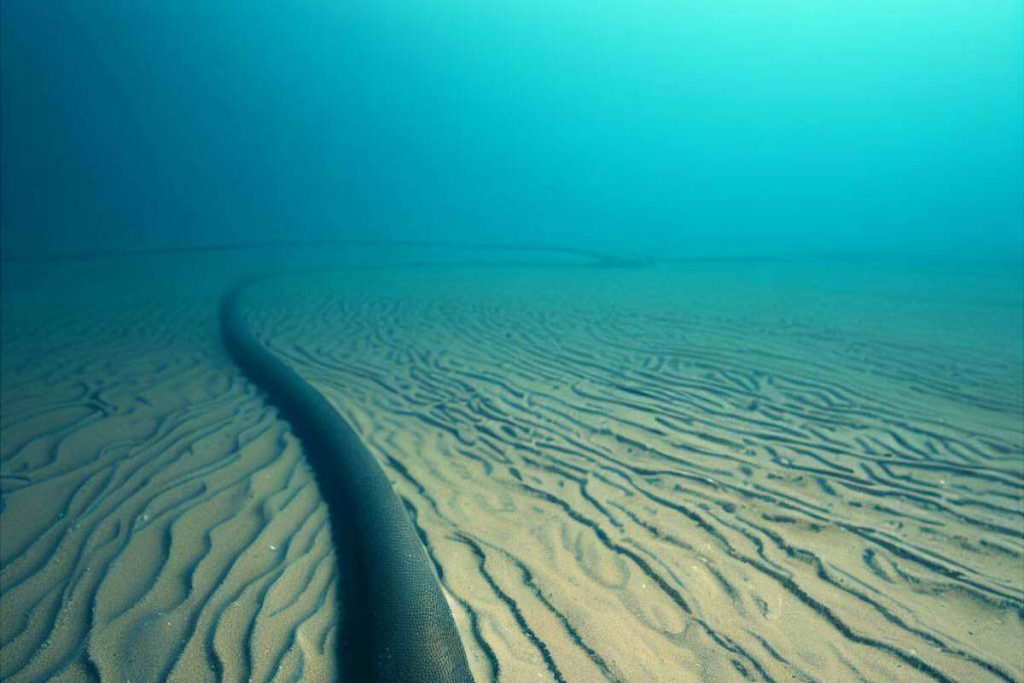
Asia: An Enhanced Network Connectivity
Asia has emerged as a hotspot for submarine cable development. Con 29 new submarine cables and 17 under construction or proposed, the level of interconnectivity between Asian countries has increased significantly. Featured projects include the ADC and SJC2 submarine cables connecting China, Japan and Singapore, as well as the IAX and MIST submarine cables connecting India and Singapore. Besides, domestic submarine cables within Indonesia and the Philippines, along with those among the countries of Southeast Asia, further strengthen intra-regional connectivity.
Europa: Building Bridges Across the Continent
Europe has also witnessed substantial progress in inter-country connectivity via submarine cables.. Hay 23 new submarine cables and 14 under construction or proposed within Europe, fostering robust data sharing between countries. These projects include undersea cables connecting island countries such as the UK and Iceland with countries on the European mainland., submarine cables between European countries and shorter submarine cables within the UK and Spain. Prominent examples include the NO-UK submarine cable connecting the UK and Norway, the submarine cable CrossChannel Fibre connecting the UK and France, and the Lonian submarine cable connecting Greece and Italy.
Africa: Rapid Updates on Intra-Sub-Regional Connectivity
Inter-country and intra-sub-regional connectivity in Africa has been rapidly updated, with six new intra-African submarine cables and six under construction or proposed to further enhance intra-sub-regional connectivity in East Africa, West Africa and South East Africa. Notable projects include the METISS submarine cable connecting South Africa and Indian Ocean island countries, and the MarocTelecomWestAfrica submarine cable connecting various countries in West Africa.
Countries or Regions Bordering the Sea: Strengthening Ocean Connections
Countries or regions bordering the oceans continue to strengthen their submarine cable connections. Oceania, Latin America and North America have been actively participating in improving their connectivity with a total of 10, 8 Y 7 new submarine cables, respectively. Besides, are under construction or proposed 6, 5 Y 6 submarine cables in oceania, Latin America and North America. The projects include both domestic submarine cables within some countries and submarine cables between countries within the region.. Prominent examples include the EAUFON submarine cable in the eastern Canadian Arctic, the SPSC/Mistral submarine cable connecting four countries in Latin America and the CoralSea Cable System submarine cable (CS) connecting australia, Papua New Guinea and the Solomon Islands.
Interregional Capacity Expansion Drives Global Connectivity
The traditional construction directions of submarine cables such as Europe-North America, Asia-North America, Latin America-North America and Asia-Europe continue to make steady progress. The submarine cable construction in the Oceania-Asia and Oceania-North America directions is active. The capacity of newly built submarine cables is generally higher, supporting high-speed growth of interregional bandwidth.
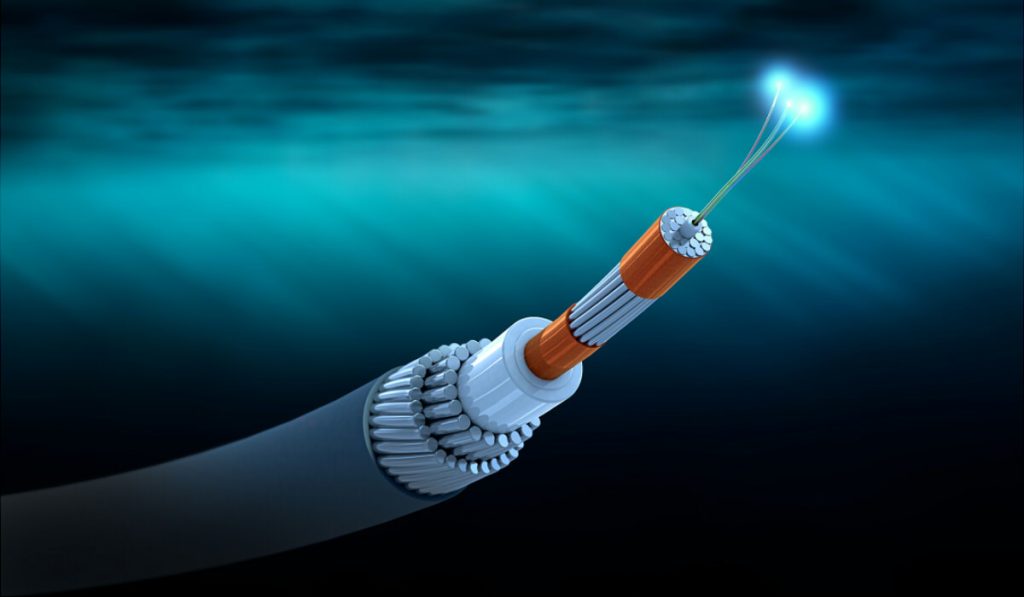
Europe-North America: Improving Transatlantic Communication
Five new submarine cables are under construction and three cables under construction or proposed to strengthen connectivity between Europe and North America. These projects, such as the Dunant cable from Google and the Amitie cables from Meta and Microsoft, have capabilities of 250 Tbps y 360 Tbps respectively, facilitating fluid communication across the Atlantic.
Asia-North America: Strengthening Transpacific Linkages
In the direction of Asia-North America, three new submarine cables and seven cables under construction or proposed are expected to improve connectivity between Asia and North America. Projects include Google's PLCN cable and Meta, as well as the JUNO cable from SerenJuno, with capacities reaching 144 Tbps y 350 Tbps respectively, further shortening the distance to the Pacific.
Latin America-North America: Uniting the Americas
The Latin America-North America directorate is adding 5 new submarine internet cables and 7 cables under construction or proposed, including Curie and GoldData-1, to improve connectivity between the two continents.
Asia-Europa: Strengthening Eurasian Ties
Asia-Europe plans to add 1 new submarine cable and 4 cables under construction or proposed. Projects include the PEACE submarine cable connecting Pakistan, East Africa and Europe, the SMW6 submarine cable connecting Singapore and France, and the IEX submarine cable connecting India and Italy, reinforcing connectivity between Asia and Europe.
Asia-Oceania: Improving Intercontinental Links
Three new submarine cables and one cable under construction or proposed are expected, including DJSC and INDIGO-West cables, to strengthen connectivity between Asia and Oceania.
Oceania-North America: Driving Transpacific Data Transfer
america is adding 2 new submarine cables, SouthernCrossNEXT y Hawaiki, to link Australia and the United States, facilitating seamless intercontinental data exchange.
The Future of Submarine Cables: Paving the Way to a Connected World
With each new cable laid, an improved connectivity network is woven, creating ties between nations and peoples. The digital age continues to shape our global landscape, and the growth of submarine cables plays a fundamental role in promoting fluid and efficient communication, boosting economies and advancing societies. The future of submarine internet cables is one of unlimited potential, ushering in an era of unprecedented global connectivity and innovation.

